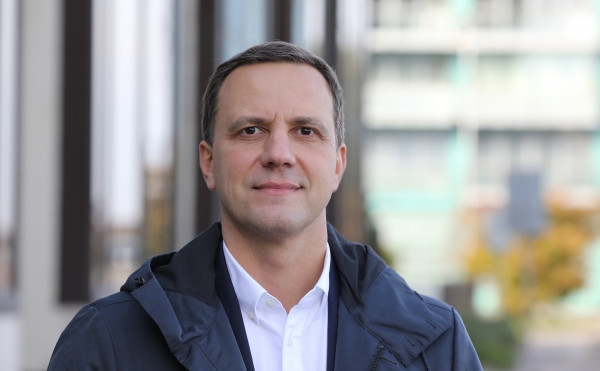








Renārs Griškevičs, SJSC State Real Estate Chairman of the Board
Energy efficient and prudent management are the only rational answers to the challenges of today and the future: high energy prices, maintaining a comfortable living space, protecting the environment. SRE, in taking care of entrusted properties, is also looking for an answer to the question: how to ensure that the particular building uses as little energy as possible on a daily basis? Is it possible, and to what extent can a building be made energy neutral, i.e., close to a nearly zero energy level?
Historically, in Latvia, interest in nearly zero energy buildings has mostly been associated with energy efficiency enthusiasts, as the design and construction of such buildings is more expensive, time-consuming and requires a higher level of skilled professionals (designers, builders, construction supervisors) compared to a ‘regular building’. What's more, it takes more expert time and effort to economically justify the construction of a zero-energy building than to justify the opposite.
According to the current laws and regulations in the field of hygiene and labour protection, a nearly zero energy building is one that, during normal building operation, ensuring an appropriate indoor microclimate, has a building energy consumption not exceeding 40 kWh/m2 per year for residential buildings, 45 kWh/m2 per year for non-residential buildings, and a total primary energy consumption not exceeding 95 kWh/m2 per year.
The Regulations Regarding Latvian Construction Standard LBN 002-19 Thermotechnics of Building Envelopes, adopted on 25 June 2019, stipulate that as of 1 January 2021 all new buildings must meet the requirements for nearly zero energy buildings. Therefore, all new buildings built in the last year should meet nearly zero energy requirements.
Designing a nearly zero energy building includes selecting the right materials and their combination, engineering systems, and coordinating their operation. The geometric shape of the building, its position against the sky and the functional layout of the premises are also important. As far as possible, SRE takes these considerations into account in development projects, for example, in the renovation of the NRT building complex. The new building will be equipped with modern ventilation and air humidification systems, among other features.
It is often believed that it is more cost-effective to rebuild a building to reduce energy consumption than to invest in renovation. Indeed, the investment required to ensure that the buildings to be renovated meet the requirements of a nearly zero energy building is often very high, but there are several reasons why it is worth doing so. First, making existing buildings energy-efficient is a much greener and better solution, because building materials are reused, construction debris created by dismantling is reduced and the amount of new materials needed is lower (reducing the extraction of natural resources). This reduces the effects of human activity, including CO2 emissions. Along with preserving cultural and historical heritage, it does not deprive future generations of opportunities. Secondly, renovation is an investment in the health of the user of the premises, as a high-quality indoor microclimate is ensured. And finally, rising prices of building materials and energy are making the renovation of buildings slightly more financially affordable than before.
Of particular importance would be the historical building at 6 Kalpaka boulevard, Riga, intended for the needs of the Prosecution Office of the Republic of Latvia, where the sustainable guidelines for the construction of public buildings developed by SRE are being implemented. It will meet all the latest energy efficiency requirements. For example, solar panels will be incorporated into the roof of the building, which will blend naturally into the urban environment. The building will also be equipped with a so-called ‘grey water’ reuse system, etc.
The priority of SRE is the preservation and development of valuable state real estate property, separating sites required by the public administration from unsuitable ones and those making a loss. We work a lot with historical buildings, where the designers did not think about energy consumption, but about functionality and aesthetics. Heat in these buildings was originally provided by coal or wood furnaces, and insulation by the thickness of the walls or (in some cases) by the air gap between the walls.
When renovating such buildings, the aim of SRE is mostly to achieve a B or C energy efficiency level, depending on the status of the building, the real possibilities and economic return. If the renovation includes the insulation of the building's structure, the most common renovation works include the replacement of all windows, replacement of systems with new ones that are highly energy efficient, as well as replacement of existing household appliances (washing machines, refrigerators, dishwashers) with low energy consuming appliances. We save on average at least 30% of the previous energy consumption. Over the last four years, energy efficiency has been improved in 58% of the projects related to cultural and historical buildings and properties.
To ensure low energy consumption in the buildings under renovation, we pay close attention not only to the thermal insulation of the structure, but also to hermeticity, i.e., proper installation of windows and hermeticity of the connections of different structures. Energy is saved by replacing the building’s systems with new ones.
If we plan to achieve the A energy efficiency level, we also evaluate the energy sources and cooling systems and the amount of investment needed to achieve the criteria for nearly zero emission buildings set out in the Cabinet Regulations. For buildings that are more than 30 years old, a new ventilation system with a recuperator must also be provided, ensuring a sufficient amount of fresh air indoors without wasting the energy used to heat the indoor air.
It is said that the most valuable energy is energy that is not wasted. Creating energy efficient buildings is patient, long-term work that requires knowledge of both the latest technologies and materials, as well as the possibilities of their application. But I am sure that the goal of achieving low energy consumption is worth the effort.

